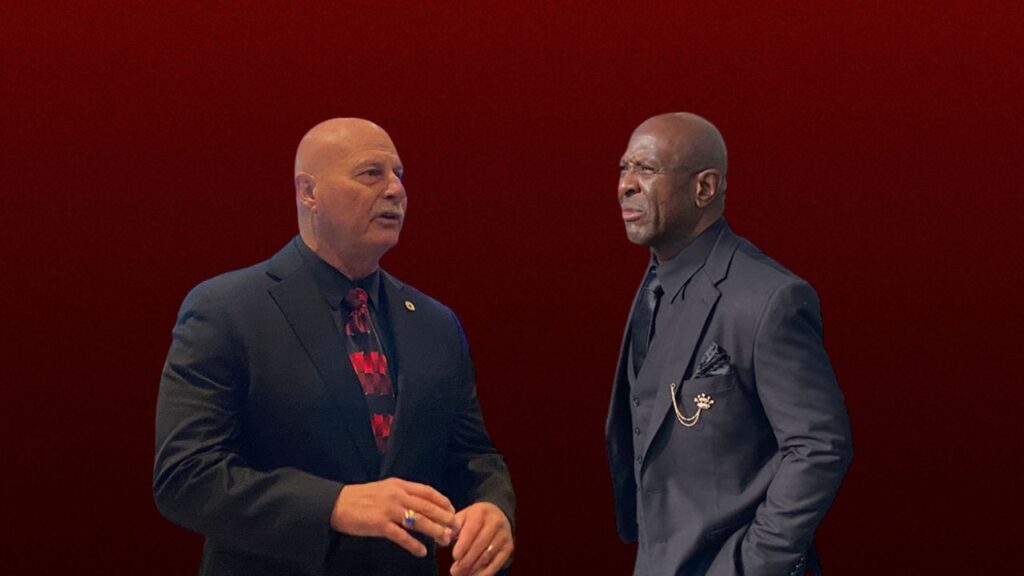James Pratt, head cashier at Phantom Fireworks in Hinsdale, N.H., helps bag a customer's order on June 28, 2024. (AP File)

- July inflation falls to 2.9%, the lowest in over three years, signaling a steady cooling of price pressures.
- Consumer prices rose just 0.2% in July; core inflation hits the lowest level since April 2021.
- Fed poised for September rate cut as inflation cools and consumer price growth slows significantly.
Share
|
Getting your Trinity Audio player ready...
|
WASHINGTON — Year-over-year inflation reached its lowest level in more than three years in July, the latest sign that the worst price spike in four decades is fading and setting up the Federal Reserve for an interest rate cut in September.
Wednesday’s report from the Labor Department showed that consumer prices rose just 0.2% from June to July after dropping slightly the previous month for the first time in four years. Measured from a year earlier, prices rose 2.9%, down from 3% in June. It was the mildest year-over-year inflation figure since March 2021.
Related Story: How Food Prices Have Changed Over the Past Four Years

The ongoing inflation slowdown could affect the presidential campaign, given that former President Donald Trump has highlighted rampant inflation as a key failing of the Biden administration and its energy policies. Vice President Kamala Harris has said she would soon unveil new proposals to “bring down costs and also strengthen the economy overall.”
The government said nearly all of July’s inflation reflected higher rental prices and other housing costs, a trend that, according to real-time data, is easing. As a result, housing costs should rise more slowly in the coming months, contributing to lower inflation.
In July, grocery prices rose just 0.1% and are a scant 1.1% higher than they were a year earlier, a much slower pace of growth than in previous years. Yet many Americans are still struggling with food prices, which remain 21% above where they were three years ago, though average wages have also sharply increased since then.
Related Story: Home Depot, Sensing Uneasy Economic Vibe From Homeowners and Contractors, Trims ...

Gas prices were unchanged from June to July and have actually fallen 2.2% in the past year. Clothing prices also dropped last month; they’re nearly unchanged from 12 months earlier. New and used car prices fell in July, too. Used car prices, which had skyrocketed during the pandemic, have tumbled nearly 11% in the past year.
Some food prices, including for meat, fish and eggs, are still increasing faster than before the pandemic. Dairy and fruit and vegetable prices, though, fell in July.
Wednesday’s report showed that inflation is steadily falling closer to the Fed’s 2% target — though not too quickly, which might suggest that the economy is weakening, said Tara Sinclair, an economist at George Washington University and a former Treasury Department official.
“It’s a comforting report, both because it is going in the right direction and because it is not doing anything too dramatic,” Sinclair said. “It is exactly what we wanted to see.”
For nearly a year, cooling inflation has provided gradual relief to America’s consumers, who were stung by the price surges that erupted three years ago, particularly for food, gas, rent and other necessities. Inflation peaked two years ago at 9.1%, the highest level in four decades.
Related Story: Fed up Americans Fight Inflation by Refusing to Pay Higher Prices
In July, excluding volatile food and energy costs, so-called core prices climbed a mild 0.2% from June, after a 0.1% increase the previous month. And compared with a year earlier, core inflation slowed from 3.3% to 3.2% — the lowest level since April 2021. Core prices are closely watched by economists because they typically provide a better read of where inflation is headed.
Fed Chair Jerome Powell has said he is seeking additional evidence of slowing inflation before the Fed begins cutting its key interest rate. Economists widely expect the Fed’s first rate cut to occur in mid-September.
When the central bank lowers its benchmark rate, over time it tends to reduce the cost of borrowing for consumers and businesses. Mortgage rates have already declined in anticipation of the Fed’s first rate reduction.
Many companies have slowed their price increases as consumers have become more resistant to paying more. Mark Barrocas, CEO of SharkNinja, a small appliance-maker in Needham, Massachusetts, said the company raised its prices 5% to 7% in 2021 and 2022 but hasn’t done so since.
Barrocas noted that people are becoming more discerning and are expecting more from the products they buy with prices so much higher than they were a few years ago.
“You really have to think very, very carefully about the long term effects of raising prices,” he said.
At a news conference last month, Powell said that cooler inflation data this spring had strengthened the Fed’s confidence that price increases are falling back to a 2% annual pace. Another inflation report will be issued next month before the Fed’s Sept. 17-18 meeting, with economists expecting that report to also show that price increases remained mostly tame.
Inflation has eased substantially in the past two years as global supply chains have been repaired, a spate of apartment construction in many large cities has cooled rental costs and higher interest rates have slowed auto sales, forcing dealers to offer better deals to potential car buyers.
Related Story: How Food Prices Have Changed Over the Past Four Years
Consumers Becoming More Price-Sensitive
Consumers, particularly lower-income ones, are also becoming more price-sensitive, forgoing high-priced items or shifting to cheaper alternatives. This has forced many companies to rein in price hikes or even offer lower prices.
Prices are still rising sharply for some services, including auto insurance and health care. Auto insurance costs have shot up as the value of new and used vehicles has soared compared with three years ago. They jumped 1.2% just from June to July, defying expectations for a smaller gain.
Still, once insurance companies have raised their prices enough to cover the cost of more valuable cars, their prices are expected to rise more slowly.
As inflation continues to decline, the Fed is paying increasingly close attention to the job market. The central bank’s goals, as defined by Congress, are to keep prices stable and support maximum employment.
This month, the government reported that hiring slowed much more than expected in July and that the unemployment rate rose for a fourth straight month, though to a still-low 4.3%. The figures roiled financial markets and led many economists to boost their forecasts for interest rate cuts this year.
Most analysts now expect at least three quarter-point rate cuts at the Fed’s September, November and December meetings. The Fed’s benchmark rate is at a 23-year high of 5.3%.
Still, the rise in the unemployment rate has reflected mainly an influx of job-seekers, especially new immigrants, who haven’t immediately found work and so have been classified as unemployed. That is a much more positive reason for a higher unemployment rate than if it came from a jump in layoffs. Measures of job cuts remain low.
On Thursday, the government will release its latest data on retail sales, which are expected to show that consumers increased their spending modestly in July. As long as shoppers are willing to spend, businesses are likely to hold onto their workers and may even add staff.



















